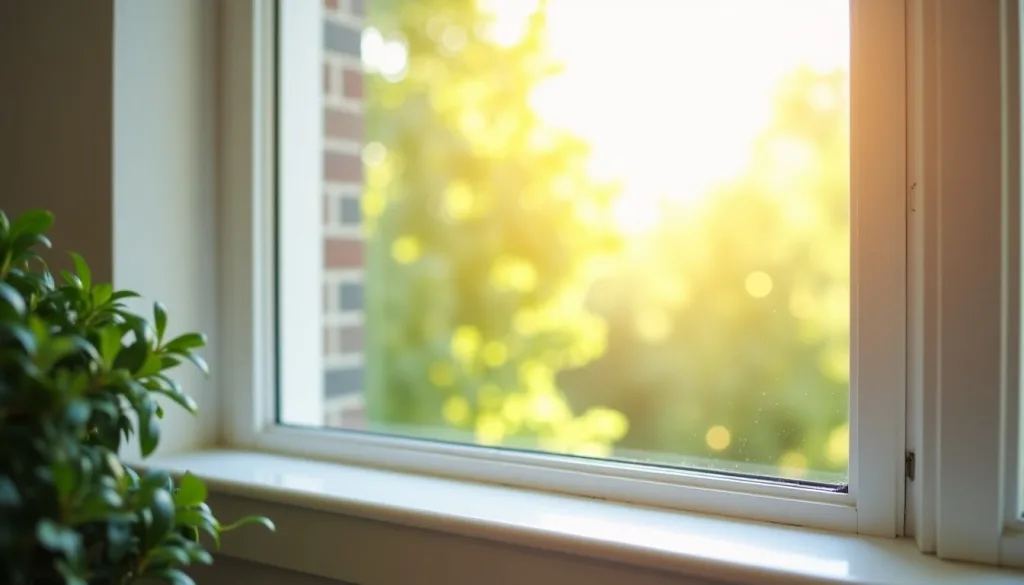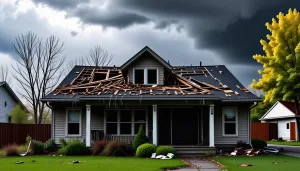When contemplating window replacement as part of your home improvement project, the choice of window materials plays a pivotal role in determining the overall cost, aesthetics, and energy efficiency. Each material offers unique benefits and drawbacks, which can significantly affect both your budget and your home’s energy efficiency. To make an informed decision, it’s essential to understand the characteristics and implications of various window materials.
Among the most popular materials for window frames are wood, vinyl, aluminum, fiberglass, and composite materials. Each has distinct attributes that cater to different preferences and requirements. Below is a comparison to help visualize the cost, durability, and maintenance needed for each material:
| Material | Average Cost | Durability | Maintenance | Energy Efficiency |
| Wood | High | Medium to High | High | Good |
| Vinyl | Low to Medium | Medium | Low | Excellent |
| Aluminum | Medium | High | Low | Poor |
| Fiberglass | Medium to High | High | Low | Excellent |
| Composite | High | High | Low to Medium | Very Good |
Wood windows are often chosen for their classic appearance and natural insulation properties. They provide a timeless appeal and can be painted or stained to match your home’s décor. However, they require regular maintenance to prevent rot and decay, which can be a significant consideration in areas with high moisture or humidity.
Vinyl windows are a popular, cost-effective choice for many homeowners. They offer excellent energy efficiency due to their thermal resistance properties and require minimal maintenance. Their affordability, combined with the advantage of not needing to be painted or stained, makes them a practical option for those seeking both utility and cost savings.
Aluminum windows are known for their strength and longevity. They are less prone to warping and are ideal for large window designs due to their lightweight nature. However, they are less energy-efficient compared to other materials and can be prone to condensation, which might not make them the best option for colder climates.
The appeal of fiberglass windows lies in their durability and superior energy efficiency. They have a lower thermal expansion rate compared to vinyl, making them less likely to warp and ensuring a tight seal for years. Although more expensive upfront, they offer long-term savings on energy costs, making them a sound investment for the environmentally conscious homeowner.
Composite windows combine the best qualities of wood and vinyl. They replicate the aesthetic of wood with enhanced durability and minimal maintenance needs. This option is particularly beneficial for homeowners looking for high performance with the aesthetic benefit of wooden windows, all while maintaining very good energy efficiency.
In selecting the right window material for your home improvement project, consider your budget, climate, maintenance preference, and energy efficiency goals. Opting for the best material that aligns with these factors will ensure a sound investment in your home’s appearance, comfort, and value for years to come.
size and customization options
When determining the cost of your window replacement project, size and customization options are critical factors that can significantly influence the final price. It’s essential to understand how various aspects of size and design can impact both the expenses and the overall outcome of your home improvement efforts.
1. Window Size:
– Standard vs. Custom Size: Standard-sized windows are generally less expensive and usually readily available. If your home’s existing window openings match standard sizes, this can help keep costs down. However, if your window openings require customized dimensions, the price per window will likely increase due to the additional manufacturing and tailoring costs.
– Large Windows and Picture Windows: Larger windows, such as picture or bay windows, often command higher prices due to the increased amount of materials required and the complexity of installation. These expansive windows can provide exceptional daylight and views, but they are a more significant investment both financially and in terms of energy efficiency considerations.
2. Design Complexity:
– Standard vs. Specialty Shapes: While rectangular windows remain the most cost-effective option, specialty shapes such as arches, circles, and octagons add a unique touch but come with higher manufacturing costs. If your project aims to include architectural flair beyond the ordinary, prepare for a corresponding increase in expenses.
– Opening Mechanism Options: The choice of window operation style—be it single-hung, double-hung, casement, awning, slider, or tilt and turn—affects the price. Generally, the more mechanics or hardware involved, the higher the cost becomes, as each adds complexity and material costs.
3. Glazing and Glass Features:
– Single vs. Double or Triple Glazing: Energy efficiency is a key consideration, and investing in double or triple-pane glass can boost insulation but also increase initial costs. While upgrading to additional glazing layers requires a larger upfront investment, this choice can lead to significant savings on energy bills over time.
– Additional Glass Treatments: Special glass treatments, like low-E coatings or tinted glass, enhance energy efficiency and UV protection but add to the overall cost. Discussing these options with a window specialist can help in making cost-effective decisions that align with your home’s energy savings goals.
4. Aesthetic Customizations:
– Grids and Mullions: Incorporating grids or mullions to mimic classic architectural styles provides aesthetic charm but can elevate costs. Consider whether the visual enhancement justifies the additional expense based on your budget and design objectives.
– Decorative Glass Options: Including stained or etched glass enhances visual appeal and adds a personalized touch to your windows. However, such customizations increase the project’s expenditure, catering specifically to aesthetic preference rather than function or efficiency.
5. Color and Finish Choices:
– Standard Colors vs. Custom Finishes: While standard color options are abundant and more affordable, homeowners often opt for custom-painted finishes to perfectly match existing decor or exterior trim. Although this adds an extra cost, it contributes to a cohesive design scheme enhancing curb appeal and overall satisfaction.
When planning for window upgrades in your home improvement project, carefully weighing the costs and benefits of these size and customization options is vital. Balancing your aesthetic goals with budget constraints and energy efficiency objectives ensures your investment yields optimal returns both visually and financially.
labor and installation fees
When undergoing a home improvement project involving window replacement, it is crucial to account for the labor and installation fees associated with professional service. One might consider these expenses secondary to the material and design choices, yet they play an essential role in the total cost and outcome of your investment. Understanding the breakdown of these fees can help ensure you budget accurately and avoid any unexpected surprises during your home renovation.
First, contemplate the complexity of the installation. The intricacies involved in removing old windows and installing new ones significantly affect labor costs. Simple window replacements in easily accessible locations often incur lower costs, whereas complex installations—such as those requiring structural modifications or involving heavy windows in difficult-to-reach areas—demand higher skill levels and more labor hours, thus increasing expenses.
Engaging a professional also brings the advantage of ensuring quality and compliance. Certified window installers come with expertise that guarantees windows are fitted correctly, thereby optimizing their performance in terms of security, energy efficiency, and longevity. Incorrect installation can lead to inefficiencies like air leaks which can compromise your home’s comfort and increase heating and cooling costs over time.
Next, consider the benefit of a comprehensive warranty often provided by professional installers. These warranties typically cover installation faults, offering added peace of mind and protecting your investment. A properly installed window maximizes its intended benefits, including energy efficiency, minimizing future repairs or replacements.
Regional labor costs also contribute considerably to installation expenses. Rates vary based on location due to differences in the cost of living and the availability of skilled labor. Urban areas often exhibit higher labor rates due to demand and market conditions, while more rural settings might offer slightly lower costs in comparison. Doing thorough research and obtaining quotes from multiple providers can help identify competitive pricing within your area.
Additionally, seasonal fluctuations can impact labor availability and pricing. Many homeowners opt for window replacements during warmer months, potentially leading to higher demand and increased prices. Scheduling your home improvement project during less busy times might lead to cost savings and quicker project turnaround.
Ultimately, while it might be tempting to cut corners on installation fees by attempting a DIY approach or hiring less expensive, non-certified installers, doing so poses significant risks. Professional installation not only ensures adherence to applicable building codes but also enhances the performance and energy efficiency of your new windows, saving time and money in the long run. By properly planning for labor and installation costs, you can secure a successful window replacement project that enhances both the aesthetic and functional value of your home.
energy efficiency considerations
When considering energy efficiency in your window replacement project, remember that windows play a pivotal role in managing your home’s energy consumption. The right windows can reduce both heating and cooling costs, ultimately saving you money, improving comfort, and contributing to a more sustainable environment.
At the core of energy-efficient windows is the glazing. Double or triple-pane windows are designed to provide better insulation compared to single-pane models. The additional glass layers create barrier zones that reduce heat transfer, significantly improving thermal resistance. Investing in double or even triple glazing might mean a larger upfront expenditure, but this choice often results in substantial energy savings over time, leading to reduced utility bills and enhanced comfort within your home.
Low-emissivity (low-E) coatings are another critical feature of energy-efficient windows. This thin, virtually invisible layer is applied to the glass, designed to reflect heat while allowing light to pass through. The result is a substantial reduction in heat loss during the winter and heat gain during the summer. Choosing windows with low-E glass is a wise investment for those aiming to enhance energy efficiency, as these windows can shield interior furnishings from harmful UV rays, preventing fading while contributing to overall home comfort.
The use of gas fills between panes is an additional consideration. Typically, argon or krypton gas is introduced between double or triple glazing to increase the window’s insulating capacity. These inert gases are less conductive than air, reducing heat transfer and increasing overall energy efficiency. When selecting your new windows, consult with a professional to determine if this option aligns with your climate and budget goals.
Moreover, examining the window frame materials is equally important in an energy-efficient replacement project. Non-conductive materials like vinyl, fiberglass, or composite options tend to perform better in preventing heat transfer compared to metal frames like aluminum. The frame design and the quality of its construction will directly influence how well your new windows can maintain a comfortable indoor climate, so choosing a material that aligns with your energy-saving aspirations is key.
Finally, always pay attention to the ENERGY STAR rating when selecting your windows. This voluntary program sets stringent energy performance standards, and choosing products that meet these can guarantee you’re investing in high-quality, energy-efficient windows that will perform well in your specific geographic locale.
By attentively considering these energy efficiency elements, you can make informed choices that not only enhance the environmental sustainability of your home improvement project but also provide long-term financial benefits. Whether you’re passionate about reducing your carbon footprint or simply looking for ways to cut back on energy costs, energy-efficient windows are a crucial component of a modern, efficient home.
geographic and seasonal price variations
Geographic and seasonal fluctuations can have a significant impact on the cost of window replacement in your home improvement project. The area where you live not only influences labor and material costs but also affects the types of windows available to you and their relative prices.
In urban regions, where demand for skilled labor is high, you might expect to pay more for installation services compared to rural areas. These variances are often attributed to the cost of living, availability of skilled professionals, and the competitive nature of home improvement markets in cities. Conversely, rural areas might present lower installation fees due to less competition and a different market dynamic, but this doesn’t always translate into lower overall costs. Material transportation and availability can lead to increased expenses when dealing in more remote locations, as suppliers may charge more to cover logistics.
Seasonal variations also play a crucial role in budget planning for window replacements. Typically, spring and summer are peak times for construction and home improvement projects, which can drive up prices because of increased demand for labor and materials. Weather conditions are usually more favorable during these months, encouraging more homeowners to undertake renovation projects, thus leading to potential price surges. On the other hand, scheduling your window replacement during the fall or winter might yield cost benefits. During these off-peak seasons, many contractors may offer discounts or more competitive rates to secure projects, which can offset the challenges posed by colder weather.
Understanding these geographic and seasonal dynamics can empower you to make smarter, more cost-effective decisions. By strategically planning your project timeline and choosing the right time and location for your window replacement, you can achieve your home improvement goals without encountering unanticipated financial burdens.
In conclusion, numerous factors contribute to the overall expense of a window replacement project. Understanding the influence of window materials, sizes, customization options, labor and installation fees, energy efficiency considerations, and geographic and seasonal pricing variations are imperative for making informed decisions. By carefully evaluating these aspects, homeowners can effectively plan and allocate resources, ensuring they enhance their dwelling’s comfort, aesthetic, and energy efficiency while simultaneously adhering to their budgetary constraints.





